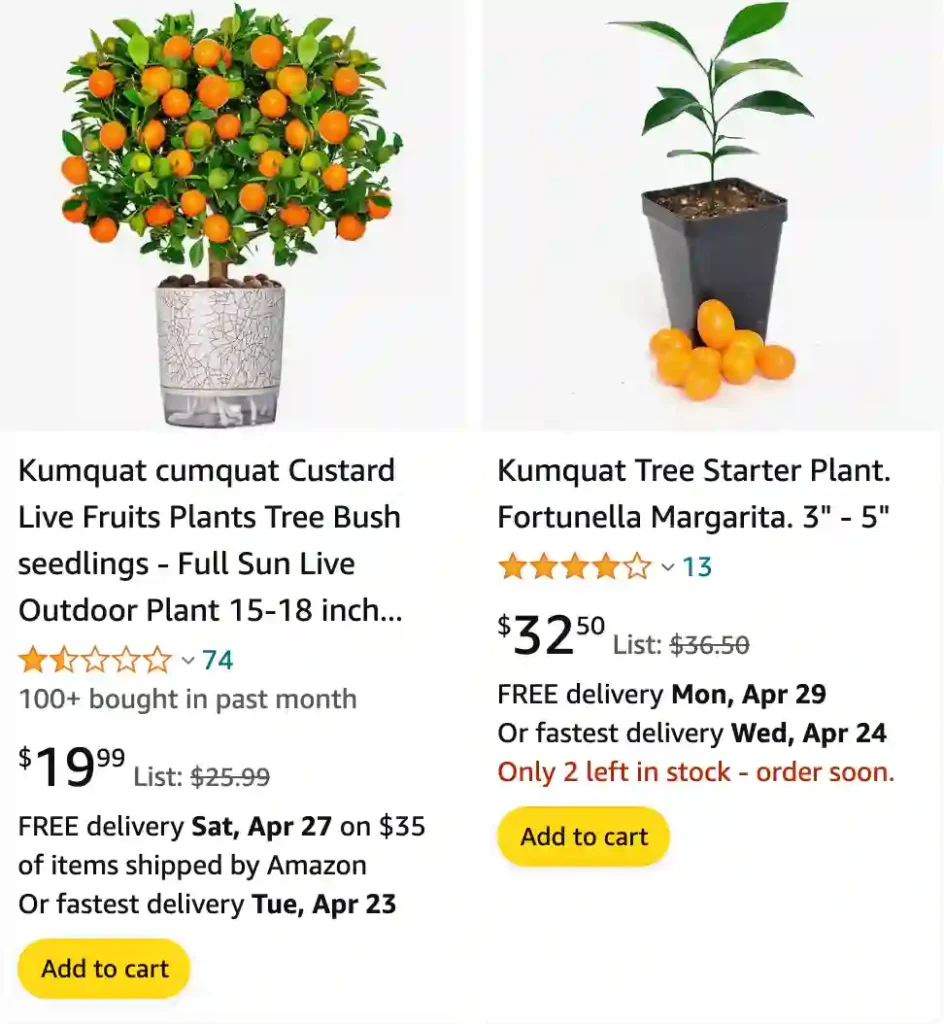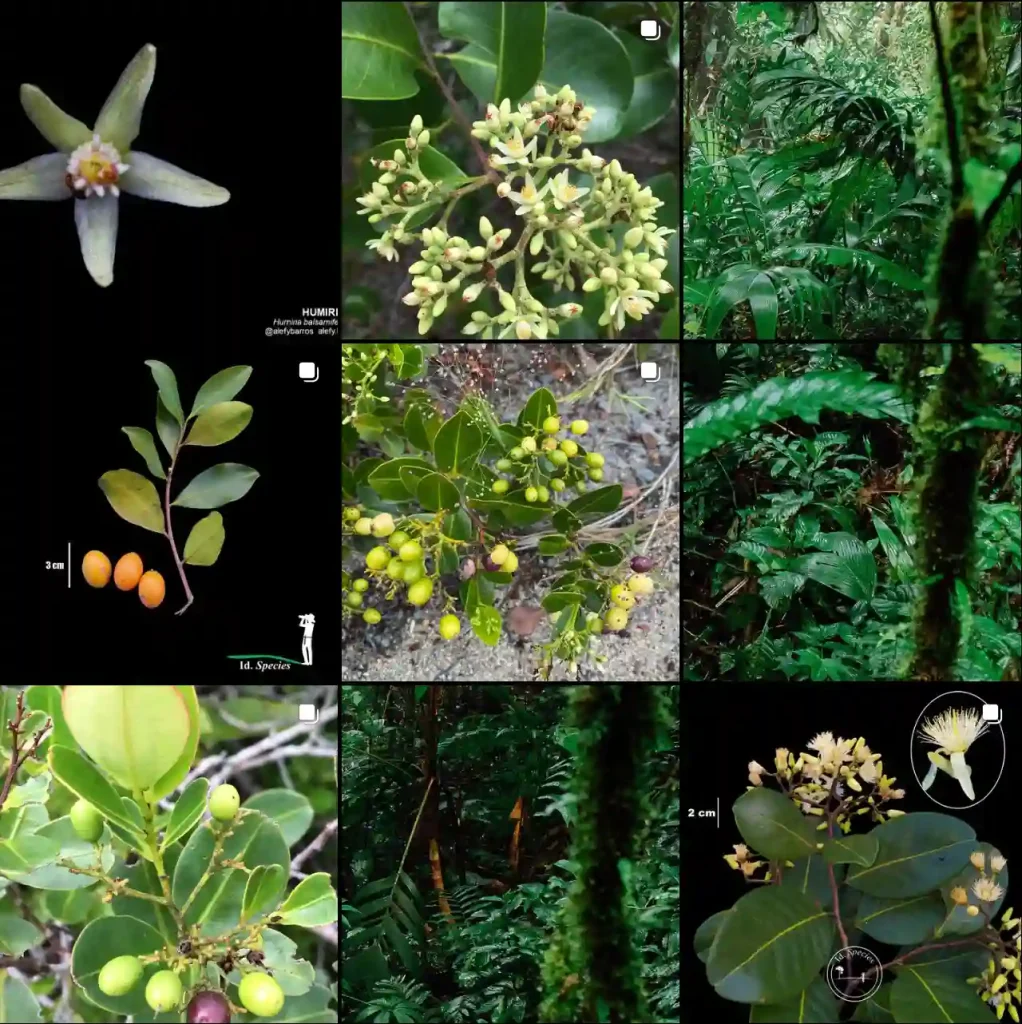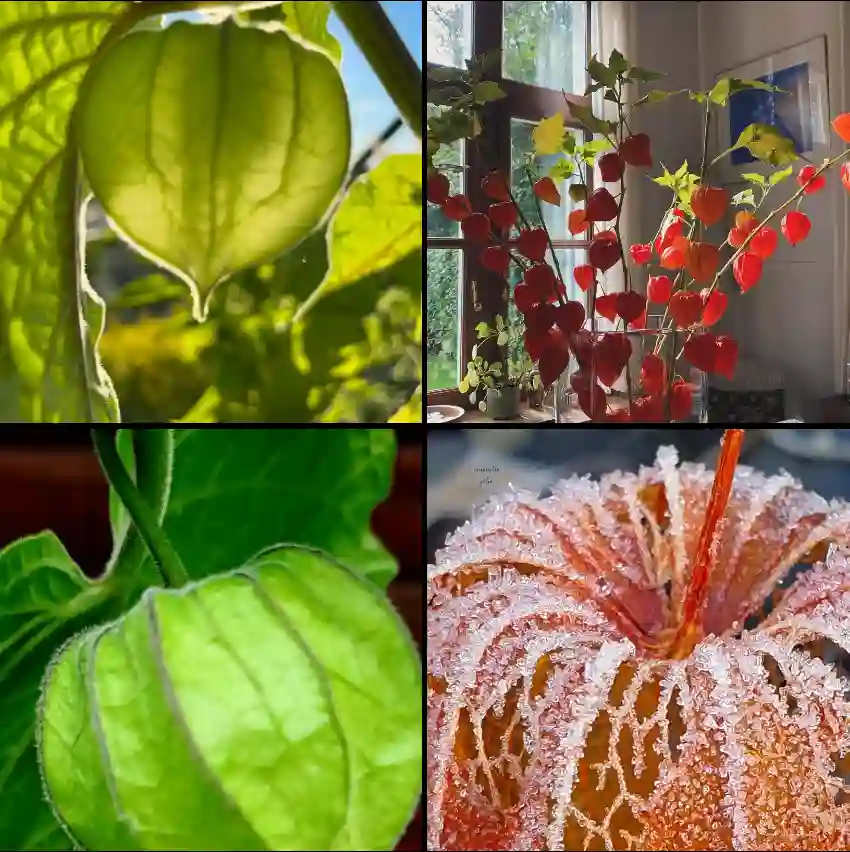
Kumquat: A Delightful Citrus Adventure
When I first encountered a kumquat, Citrus japonica, I didn’t expect it to revolutionize my understanding of citrus. Unlike the larger and juicier oranges or the tart lemons, kumquats stood out with their petite size and unexpected burst of flavors. The fruit’s unique combination of sweet and sour left an impression on me, drawing me into its intriguing world.
32 Species in Genus Citrus
A Brief Introduction to Kumquats
The kumquat is native to Asia, particularly southern China and parts of Southeast Asia. Its small, oblong fruits resemble miniature oranges but have a personality entirely their own. What fascinated me most is that you eat the entire fruit—peel and all. The peel offers a surprising sweetness, while the flesh inside delivers a tangy punch.
Botanically, kumquats belong to the Rutaceae family, making them relatives of oranges, limes, and grapefruits. However, they sit in their own category due to their diminutive size and distinctive taste profile. There are a few varieties, but I’ve personally explored two: the Nagami and Meiwa kumquats. The Nagami is oval-shaped and intensely tart, while the Meiwa leans toward a sweeter, rounder flavor.
Growing Kumquats in My Garden
As someone passionate about plants, I decided to cultivate kumquats in my garden. They thrive in warm climates and adapt surprisingly well to container gardening. When I first planted a Nagami kumquat tree, I was amazed at how little space it required. These trees are compact, rarely exceeding 8-10 feet, and they offer stunning visual appeal.
Their glossy green leaves and delicate white flowers are a treat for the senses. The flowers exude a subtle, citrusy fragrance that transforms any space into a fragrant haven. By ensuring they receive full sun and well-drained soil, I’ve enjoyed healthy growth and bountiful harvests. During winter, they showcase their hardiness by enduring cooler temperatures, a trait rare among citrus trees.
Culinary Adventures with Kumquats
My kitchen became a creative playground after I started harvesting kumquats. I enjoy eating them fresh, but their versatility is what truly excites me.
- Candied Kumquats: Simmering the fruit in a sugar syrup transforms their tang into a luscious treat perfect for desserts or as a garnish.
- Kumquat Marmalade: This spread has become a household favorite, blending the fruit’s natural sweetness and zest into a breakfast staple.
- Salads and Cocktails: Thin slices of kumquats elevate salads with their burst of acidity. They also make refreshing additions to cocktails, offering both flavor and visual appeal.
One memorable recipe involved combining kumquats with rosemary and honey for a glaze on roasted chicken. The result was a harmonious blend of sweet, savory, and tangy notes.
The Health Benefits of Kumquats
Beyond their culinary charm, kumquats are a powerhouse of nutrients. They’re packed with vitamin C, which supports the immune system and promotes glowing skin. The peel is rich in essential oils and antioxidants, making it a valuable addition to a balanced diet.
Kumquats also contain dietary fiber, which aids digestion and helps maintain a healthy gut. I often snack on them guilt-free, knowing they’re as nutritious as they are delicious.
Kumquats as a Cultural Symbol
In Asian cultures, kumquats symbolize good fortune and prosperity. During Lunar New Year celebrations, they’re often displayed as ornamental trees or given as gifts. Learning this deepened my appreciation for the fruit, connecting its presence in my garden to a broader cultural significance.
Challenges and Rewards
Growing kumquats hasn’t been without challenges. Their susceptibility to pests like aphids and citrus leaf miners required vigilance. Regular pruning and natural remedies, such as neem oil, have helped me maintain their health. Despite these hurdles, the joy of picking fresh kumquats from my garden far outweighs any effort.
FAQs
How to eat a kumquat?
Okay, so I’m not the biggest fan of the full kumquat experience because that sourness blast in the middle is a lot for me. There’s a trick I learned that makes them a lot more enjoyable though. First, you gently roll the kumquat between your fingers – this breaks up the pulp inside and makes the sweet peel flavors stronger. Then, I make a tiny bite in the end and squish out most of the juice. Once it’s less juicy, I pop the whole thing in my mouth and chew. That way, I get the sweetness of the peel upfront, and then the tartness mixes in more gradually.
What does a kumquat taste like?
A kumquat tastes like a super-concentrated, mixed-up citrus experience. Imagine a tiny orange where someone flipped the flavors – the peel is sweet and sunshine-y, almost like candied orange zest, and then the inside is this crazy burst of sour that reminds me of a super tart lemonade. It’s a bit of a shock to your tastebuds at first, but the way the sweet and the sour play off each other is weirdly addictive.
Are kumquats good for you?
From what I understand, kumquats are definitely a healthy snack! They’re packed with vitamin C, which is great for your immune system, and they have a lot of fiber too. That makes them filling and good for digestion. I’ve also heard they have antioxidants, and those are supposed to be good for fighting off all sorts of health problems. Honestly, I wouldn’t eat them just for the health benefits since the flavor is so intense, but it’s a nice bonus knowing they’re good for me.
What does a kumquat look like?
Kumquats look like miniature, slightly squished oranges. They’re usually bright orange in color and about the size of a large olive or grape. Sometimes they can be round, but more often they have a slightly oblong shape. The main difference from an orange is that you can eat the whole peel of a kumquat.
When are kumquats in season?
I usually see kumquats popping up in stores during the colder months. It seems like they’re mainly a winter and early spring fruit. I’ve spotted them at the farmers’ market starting in December and as late as March or April sometimes. It might depend on where you live too – I hear they grow kumquats in California and Florida, so the seasons could vary slightly.
What to do with kumquats?
Honestly, I’m still figuring this one out! Kumquats have such a unique flavor that it can be a little tricky to figure out how to use them. I love the idea of making kumquat marmalade – I bet that sweet and sour combo would be amazing on toast. They also seem perfect for adding to cocktails, maybe muddled with some mint and a splash of rum. And candying them sounds interesting – that would tone down the tartness and make a fun, unusual snack.
Where can i buy kumquats?
Finding kumquats can be a little bit of an adventure since they’re not as common as regular oranges. Here’s where I’d check:
Farmers’ Markets: Your best bet, especially when they’re in season. Farmers who grow specialty fruits often have them.
Asian Groceries: Kumquats are grown in parts of Asia, so check out Asian grocery stores or markets.
Specialty Produce Stores: Places that focus on more unusual fruits and vegetables might carry them.
Online: If everything else fails, you can sometimes find them through online retailers specializing in fresh produce.
Can dogs eat kumquats?
While the fleshy inside of a kumquat itself isn’t technically toxic for dogs, it’s generally best to avoid feeding them kumquats. The main issue is that they’re citrus fruits, and the acidity can really give dogs an upset tummy. Also, the peel and seeds of kumquats can potentially cause digestive problems or even blockages. It’s better to stick to dog-friendly fruits as treats – things like apples or blueberries are safer options.
Is calamansi and kumquat the same?
Calamansi and kumquats are definitely similar, but not exactly the same! They’re both small, super tart citrus fruits with edible peels. However, calamansi are a hybrid of kumquats and another citrus fruit (likely a mandarin orange). This means they have a slightly different flavor profile compared to a pure kumquat. While both are very sour, calamansi tend to have a bit more of a distinct lime-like tang to them.
What color is kumquat?
Kumquats are typically a bright, vibrant orange color – just like miniature versions of regular oranges! Sometimes they can be a little more on the yellow-orange side, but they’re usually in the orange family.
When do kumquat trees bear fruit?
Kumquat trees usually flower in the summer and the fruits ripen during the cooler months. Harvest season can vary depending on the specific type of kumquat and your location, but generally, you’ll find ripe kumquats from around November or December through March or even April.
Can you eat kumquat seeds?
Yes, you can technically eat kumquat seeds, but they’re not particularly tasty. Like many citrus seeds, they’re quite bitter. Most people either choose to spit them out while eating the kumquat, or cut the kumquat in half and remove the seeds before eating. It’s really up to your preference!
Can you freeze kumquats?
I’ve frozen kumquats before by washing and drying them thoroughly, then placing them in a single layer on a baking sheet before transferring them to a freezer bag once frozen.
How to make kumquat jam?
When making kumquat jam, I usually slice the kumquats thinly, remove the seeds, and cook them with sugar and water until they reach a thick, jammy consistency.
Do kumquat trees lose their leaves in winter?
My kumquat tree tends to lose a few leaves during winter, especially when the temperature drops, but it usually bounces back in spring.
How to make kumquat marmalade?
For kumquat marmalade, I love simmering finely chopped kumquats with sugar and a bit of lemon juice until the mixture thickens and the flavors meld together beautifully.
Kumquat vs Loquat
I’ve sunk my teeth into both, and while the loquat boasts a soft, juicy flesh with a sweet-tart balance, the kumquat is a tiny, tangy powerhouse. It’s like comparing a gentle summer rain to a sharp winter slap.
Kumquat vs Calamondin
The calamondin, a larger cousin of the calamansi, is less intense but still quite tart. It’s like the calamansi toned down a notch, while the kumquat offers a sweeter, more complex flavor profile.
Kumquat vs Orange
The orange is a classic for a reason. Its juicy sweetness is undeniable. The kumquat, on the other hand, is a concentrated burst of flavor, a tiny package of tangy surprise compared to the orange’s familiar warmth.
Kumquat vs Clementine
Clementines are like mini-oranges, sweet and easy to peel. The kumquat, though, requires a bit more effort and delivers a completely different taste experience. It’s like trading a cozy blanket for an invigorating cold plunge.
Kumquat vs Goldenberry
I’ve never been a huge fan of goldenberries, but I do appreciate their unique taste. Compared to the kumquat’s citrusy zing, the goldenberry is more subdued, with a slightly sweet and tangy flavor.
Kumquat vs Gooseberry
Gooseberries, with their tart and slightly astringent taste, are a world away from the sweet-tart balance of a kumquat. It’s like comparing a sharp vinegar to a complex wine.
Kumquat vs Grape
Grapes are juicy and refreshing, offering a wide range of sweetness levels. Kumquats, on the other hand, are all about concentrated flavor and a zesty finish. It’s like comparing a refreshing pool to a stimulating ocean wave.
Kumquat vs Japanese Plum
The Japanese plum, with its sweet and juicy flesh, is a delightful treat. The kumquat, however, offers a completely different experience, with its small size, thick skin, and complex flavor.
Kumquat vs Lemon
A lemon is a pucker-inducing powerhouse. While the kumquat has its tart moments, it also offers a sweetness and complexity that the lemon lacks. It’s like comparing a sharp knife to a finely tuned instrument.
Kumquat vs Lime
Like the lemon, the lime is incredibly tart. The kumquat, however, brings a sweetness to the party that the lime simply can’t match. It’s like comparing a sour candy to a sweet and sour one.
Kumquat vs Mandarin
The persimmon, with its unique texture and flavor, is a fascinating fruit. Compared to the kumquat, it’s a completely different ballpark. The persimmon is soft and sweet, while the kumquat is small, firm, and tangy.
Kumquat vs Tangerine
Similar to the mandarin, the tangerine is sweet and easy to peel. The kumquat, with its thicker skin and complex flavor, is a completely different story. It’s like comparing a gentle breeze to a strong wind.
Kumquat vs Physalis
The physalis, with its sweet and slightly tart taste, is an interesting fruit. However, it lacks the complexity and intensity of flavor that the kumquat offers.
Why Kumquats Matter?
To me, kumquats embody the perfect balance of beauty, functionality, and taste. They’ve added depth to my gardening journey, culinary experiments, and even my understanding of nature’s diversity. Whether you’re a seasoned gardener or someone looking to add a unique fruit to your diet, kumquats are worth the investment.
If you’ve never tried one, I encourage you to take that leap. Let the kumquat surprise you with its bold, tangy sweetness, and discover why this tiny fruit holds such a big place in my heart.
If i die, water my plants!



